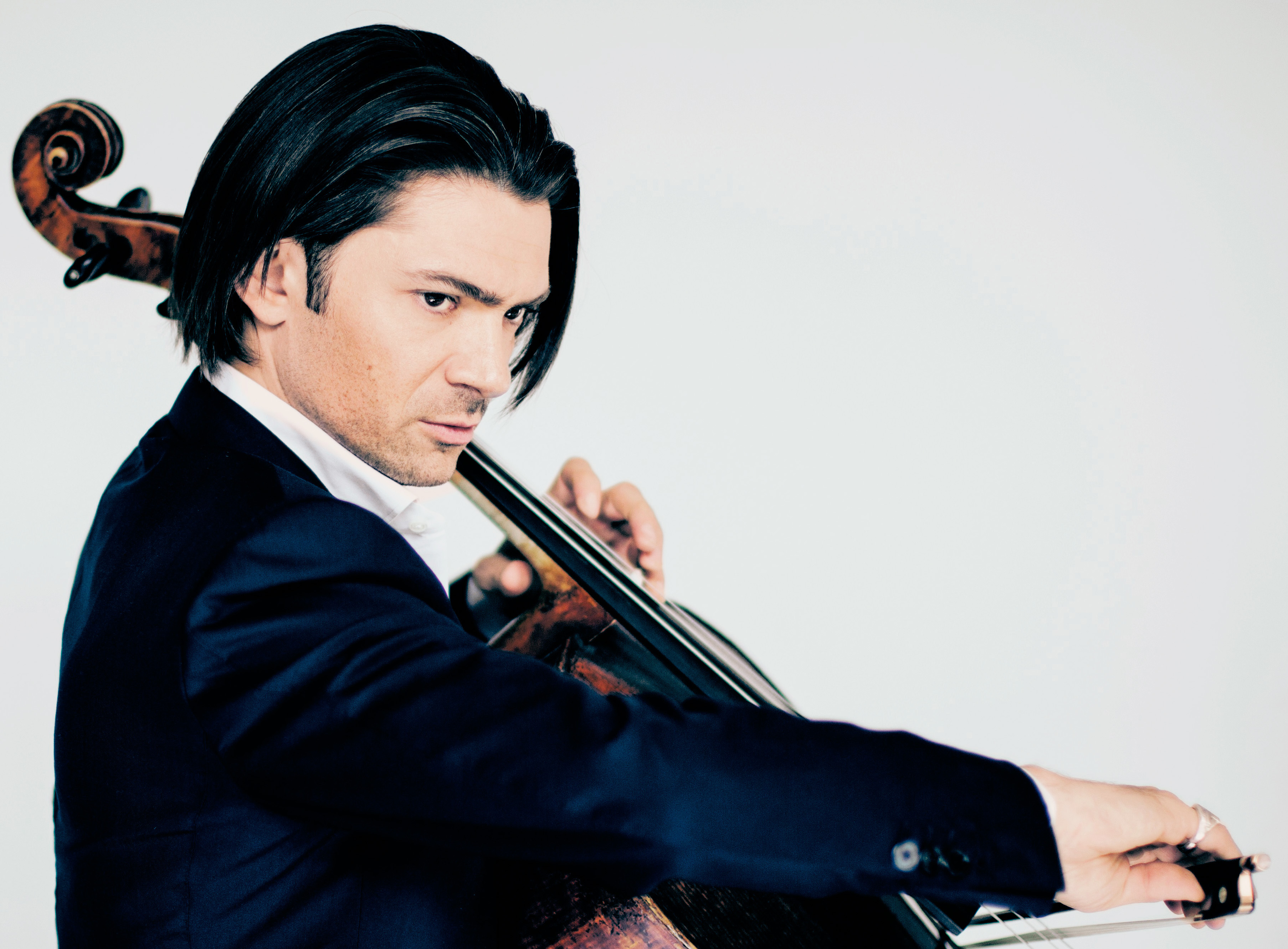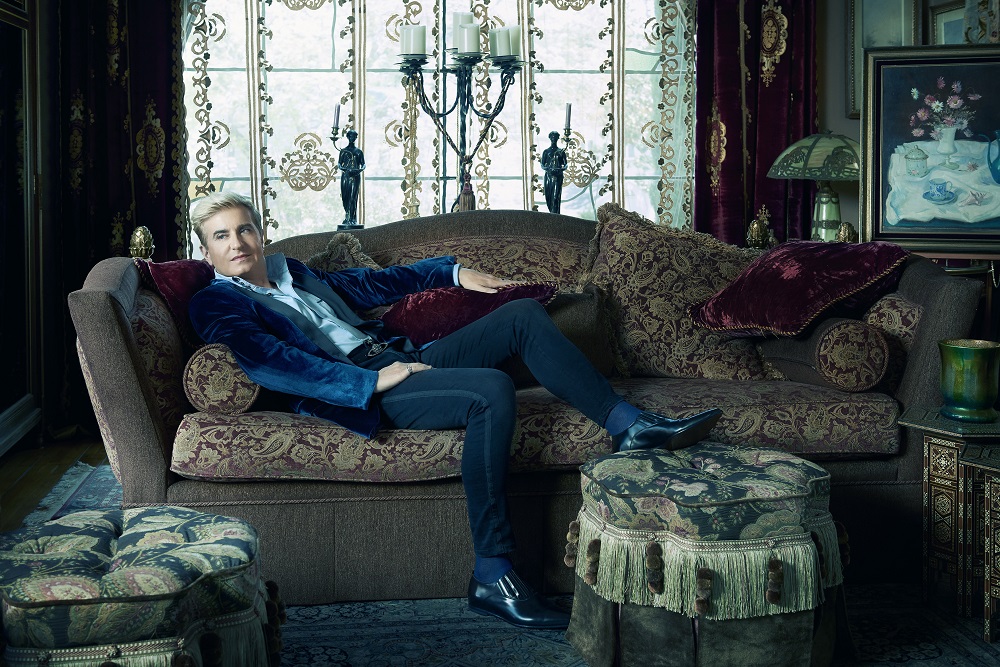Thibaudet/Batiashvili/Capuçon Trio, Barbican review – a supergroup to savour | reviews, news & interviews
Thibaudet/Batiashvili/Capuçon Trio, Barbican review – a supergroup to savour
Thibaudet/Batiashvili/Capuçon Trio, Barbican review – a supergroup to savour
Three solo stars come together in ego-free harmony
Even in a large hall, very good things can come in small packages. In advance, partisans of the Wigmore Hall or some other dedicated chamber space might have feared that the Barbican’s main auditorium would turn out to be too chilly a barn for the intimate music-making promised by this supergroup. All-star trios or quartets, made up of soloists more accustomed to the undivided limelight, can frequently add up to less than the sum of their parts.
Prior worries, however, proved misplaced. Jean-Yves Thibaudet’s piano, Lisa Batiashvili’s violin and Gautier Capuçon’s cello stitched their individual strands of sound into a sumptuous fabric. The suboptimal conditions of the Barbican did nothing to freeze the warmth of their interaction, or blur the lucid refinement of their playing across a spread of diverse styles.
This was an imaginative, and unexpected, programme. Dating from 1923, Shostakovich’s first trio might rank as a spirited slice of juvenilia were it not for the hints of grief and abandonment that darken its palette and even look forward to the tragic and elegiac colouring of later works. In its series of short, barely integrated sketches, we already heard the mutually attentive give-and-take between Batiashvili and Capuçon (pictured below by Felix Broede), turning on a coin between frolic and anguish, that enriched the entire evening. If Thibaudet had to take something of a back seat here, the intriguing bell chimes of his Debussy-esque accompaniment hinted at pleasures to come. Fragments of a darkly jaunty danse macabre barge into the trio’s stretches of lyrical serenity, like skeletons prancing on a lawn. Indeed, this periodically feels more like a mosaic of smart ideas than a unified whole. This account made the most of its youthful longing and coiled, nervous tension.  Ravel’s A minor trio, written as the Great War broke out in summer 1914, also harbours hints of pastoral peace smashed into shards by some sudden crisis. The gorgeous opening theme (Ravel thought of it as a “Basque” tune) breaks down into a sort of artfully managed maelstrom of sound. Here the exceptional quality of Batiashvili and Capuçon’s alert to-and-fro raised their playing to the heights. Capuçon’s rich, mellow lyricism mocked the idea – as he did in every work here – that the cello has to play a mere supporting role in the trio repertoire. After the playful menace of the hyper-active second movement (Ravel called it a “pantoum”, apparently after a Malayan verse-form), the honeyed growl of Capuçon’s cello inaugurates a yearning passacaglia. It allowed cello and violin to braid their wistful lines into the most sophisticated kind of folksiness.
Ravel’s A minor trio, written as the Great War broke out in summer 1914, also harbours hints of pastoral peace smashed into shards by some sudden crisis. The gorgeous opening theme (Ravel thought of it as a “Basque” tune) breaks down into a sort of artfully managed maelstrom of sound. Here the exceptional quality of Batiashvili and Capuçon’s alert to-and-fro raised their playing to the heights. Capuçon’s rich, mellow lyricism mocked the idea – as he did in every work here – that the cello has to play a mere supporting role in the trio repertoire. After the playful menace of the hyper-active second movement (Ravel called it a “pantoum”, apparently after a Malayan verse-form), the honeyed growl of Capuçon’s cello inaugurates a yearning passacaglia. It allowed cello and violin to braid their wistful lines into the most sophisticated kind of folksiness.
For both, their passages of frankly romantic vibrato and unabashed sweetness never made the texture cloy. A bedrock of sheer elegance – I would call it French, were not Batiashvili Georgian-born and German-based – always remained. Then, amid the all forte excitement of the finale (“animé”, advises Ravel), Thibaudet’s ominous, agitated chords gesture anxiously towards the gathering global storm.  If the first two works often offered a perfect showcase for the poised and sensitive dialogue between Batiashvili and Capuçon, Mendelssohn’s second trio (from 1845) closed the concert with an equal, three-way conversation. At last, Thibaudet (pictured above) really had a consistent chance to shine. He took up the string themes of the opening allegro and embellished them with swaggering, exploratory delight. Then, in the song-like andante, his piano rippled and darted around the yearning strings – with Capuçon’s cello majestically lush in this section. As for the third-movement scherzo, suddenly we’re back – close to the end of Mendelssohn’s too-brief life – in the effervescent teenage fairyland of A Midsummer Night’s Dream. Thibaudet turned somersaults around the pitter-patter pixie dance and even weighed in with a snatch of Bottom-grade peasant stomp. The bouncing and bounding allegro of the finale also finds room for a sharp shift of mood, as a noble chorale theme breaks in to perform another of Mendelssohn's dazzling scene-changes.
If the first two works often offered a perfect showcase for the poised and sensitive dialogue between Batiashvili and Capuçon, Mendelssohn’s second trio (from 1845) closed the concert with an equal, three-way conversation. At last, Thibaudet (pictured above) really had a consistent chance to shine. He took up the string themes of the opening allegro and embellished them with swaggering, exploratory delight. Then, in the song-like andante, his piano rippled and darted around the yearning strings – with Capuçon’s cello majestically lush in this section. As for the third-movement scherzo, suddenly we’re back – close to the end of Mendelssohn’s too-brief life – in the effervescent teenage fairyland of A Midsummer Night’s Dream. Thibaudet turned somersaults around the pitter-patter pixie dance and even weighed in with a snatch of Bottom-grade peasant stomp. The bouncing and bounding allegro of the finale also finds room for a sharp shift of mood, as a noble chorale theme breaks in to perform another of Mendelssohn's dazzling scene-changes.
The respectful attentiveness of the three players at every twist and lurch of this myriad-minded music was a joy to behold, and to hear. Yes, supergroups can sometimes underperform. But not tonight. I even remembered that the firmest rebuttal to my preference for trios free of solo megastars came more than a century ago, when Thibaudet’s near-namesake Jacques Thibaud teamed up with Alfred Cortot and Pablo Casals. Last night, it felt as if the three amigos of the TBC Trio might approach that sort of summit: the contrasting encores of a Tchaikowsky song and a bravura allegro from the mature Shostakovich’s second trio set the seal on their commanding versatility. TBC: to be continued? We should certainly hope so.
rating
Explore topics
Share this article
The future of Arts Journalism
You can stop theartsdesk.com closing!
We urgently need financing to survive. Our fundraising drive has thus far raised £49,000 but we need to reach £100,000 or we will be forced to close. Please contribute here: https://gofund.me/c3f6033d
And if you can forward this information to anyone who might assist, we’d be grateful.

Subscribe to theartsdesk.com
Thank you for continuing to read our work on theartsdesk.com. For unlimited access to every article in its entirety, including our archive of more than 15,000 pieces, we're asking for £5 per month or £40 per year. We feel it's a very good deal, and hope you do too.
To take a subscription now simply click here.
And if you're looking for that extra gift for a friend or family member, why not treat them to a theartsdesk.com gift subscription?
more Classical music
 Kohout, Spence, Braun, Manchester Camerata, Huth, RNCM, Manchester review - joy, insight, imagination and unanimity
Celebration of the past with stars of the future at the Royal Northern College
Kohout, Spence, Braun, Manchester Camerata, Huth, RNCM, Manchester review - joy, insight, imagination and unanimity
Celebration of the past with stars of the future at the Royal Northern College
 Jansen, LSO, Pappano, Barbican review - profound and bracing emotional workouts
Great soloist, conductor and orchestra take Britten and Shostakovich to the edge
Jansen, LSO, Pappano, Barbican review - profound and bracing emotional workouts
Great soloist, conductor and orchestra take Britten and Shostakovich to the edge
 Jakub Hrůša and Friends in Concert, Royal Opera review - fleshcreep in two uneven halves
Bartók kept short, and a sprawling Dvořák choral ballad done as well as it could be
Jakub Hrůša and Friends in Concert, Royal Opera review - fleshcreep in two uneven halves
Bartók kept short, and a sprawling Dvořák choral ballad done as well as it could be
 Hadelich, BBC Philharmonic, Storgårds, Bridgewater Hall, Manchester review - youth, fate and pain
Prokofiev in the hands of a fine violinist has surely never sounded better
Hadelich, BBC Philharmonic, Storgårds, Bridgewater Hall, Manchester review - youth, fate and pain
Prokofiev in the hands of a fine violinist has surely never sounded better
 Monteverdi Choir, ORR, Heras-Casado, St Martin-in-the-Fields review - flames of joy and sorrow
First-rate soloists, choir and orchestra unite in a blazing Mozart Requiem
Monteverdi Choir, ORR, Heras-Casado, St Martin-in-the-Fields review - flames of joy and sorrow
First-rate soloists, choir and orchestra unite in a blazing Mozart Requiem
 Cho, LSO, Pappano, Barbican review - finely-focused stormy weather
Chameleonic Seong-Jin Cho is a match for the fine-tuning of the LSO’s Chief Conductor
Cho, LSO, Pappano, Barbican review - finely-focused stormy weather
Chameleonic Seong-Jin Cho is a match for the fine-tuning of the LSO’s Chief Conductor
 Classical CDs: Shrouds, silhouettes and superstition
Cello concertos, choral collections and a stunning tribute to a contemporary giant
Classical CDs: Shrouds, silhouettes and superstition
Cello concertos, choral collections and a stunning tribute to a contemporary giant
 Appl, Levickis, Wigmore Hall review - fun to the fore in cabaret and show songs
A relaxed evening of light-hearted fare, with the accordion offering unusual colours
Appl, Levickis, Wigmore Hall review - fun to the fore in cabaret and show songs
A relaxed evening of light-hearted fare, with the accordion offering unusual colours
 Lammermuir Festival 2025, Part 2 review - from the soaringly sublime to the zoologically ridiculous
Bigger than ever, and the quality remains astonishingly high
Lammermuir Festival 2025, Part 2 review - from the soaringly sublime to the zoologically ridiculous
Bigger than ever, and the quality remains astonishingly high
 BBC Proms: Ehnes, Sinfonia of London, Wilson review - aspects of love
Sensuous Ravel, and bittersweet Bernstein, on an amorous evening
BBC Proms: Ehnes, Sinfonia of London, Wilson review - aspects of love
Sensuous Ravel, and bittersweet Bernstein, on an amorous evening
 Presteigne Festival 2025 review - new music is centre stage in the Welsh Marches
Music by 30 living composers, with Eleanor Alberga topping the bill
Presteigne Festival 2025 review - new music is centre stage in the Welsh Marches
Music by 30 living composers, with Eleanor Alberga topping the bill
 Lammermuir Festival 2025 review - music with soul from the heart of East Lothian
Baroque splendour, and chamber-ensemble drama, amid history-haunted lands
Lammermuir Festival 2025 review - music with soul from the heart of East Lothian
Baroque splendour, and chamber-ensemble drama, amid history-haunted lands

Add comment